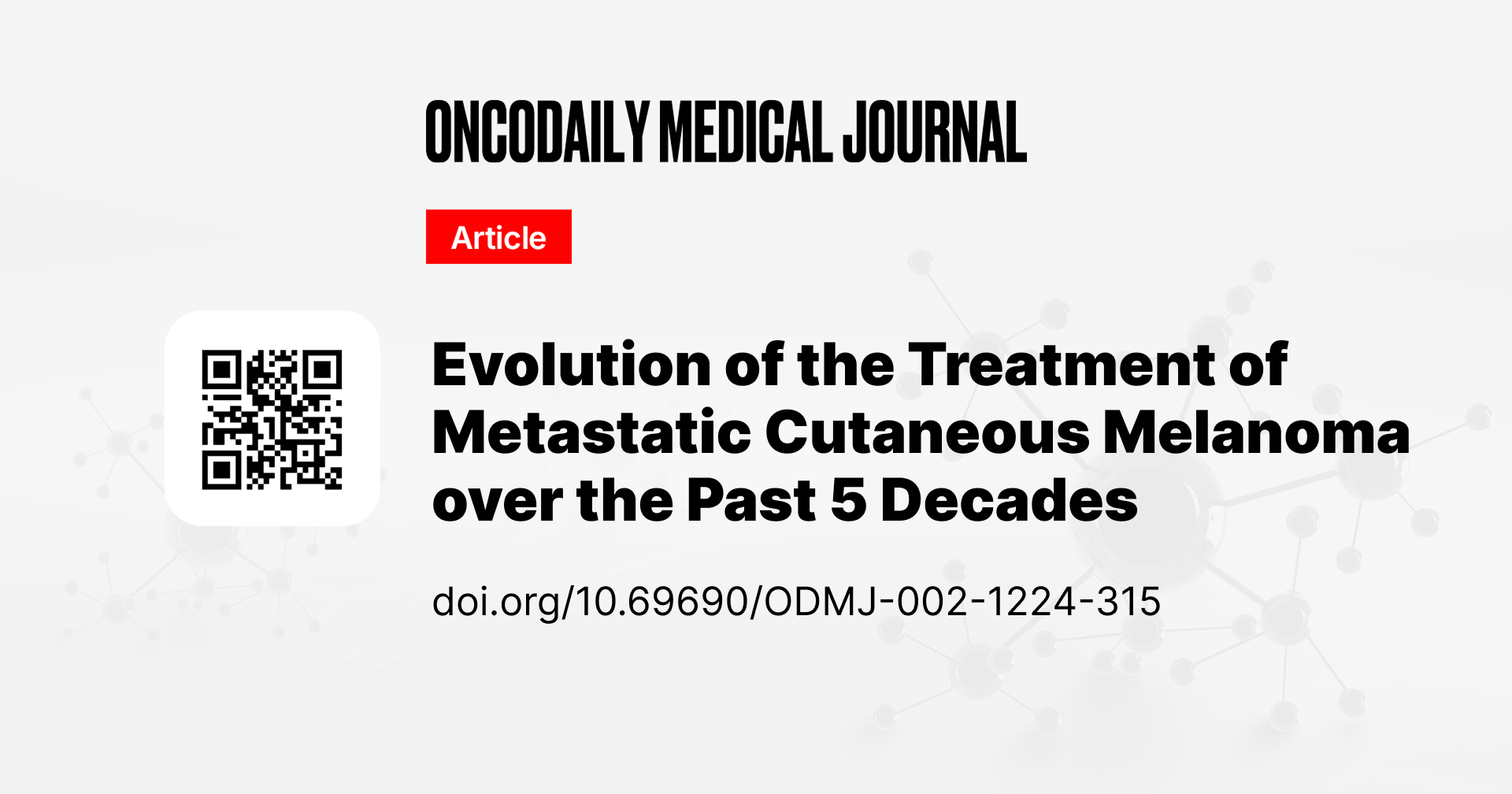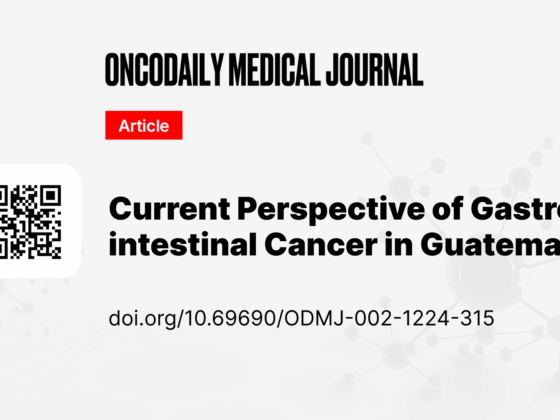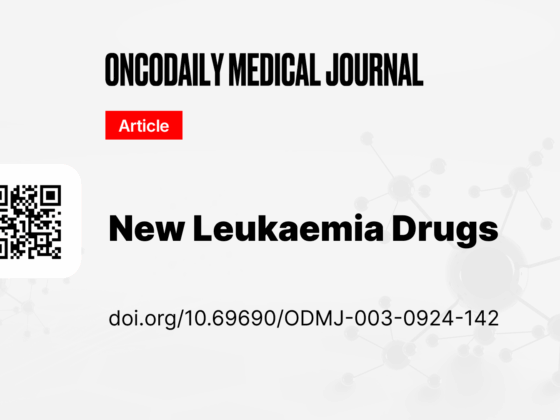In this article, we summarise a paper by Agop Y. Bedikian, published in the OncoDaily Medical Journal, tracing how care for metastatic cutaneous melanoma moved from cytotoxic agents to precision targets and immune checkpoint blockade, and what still limits durable control.
Title: Evolution of the Treatment of Metastatic Cutaneous Melanoma over the Past 5 Decades
Author: Agop Y. Bedikian
DOI: 10.69690/ODMJ-002-1224-315
Full article
Metastatic cutaneous melanoma has undergone one of oncology’s most dramatic transformations. For much of the 1960s–80s, dacarbazine (DTIC), alone or in multi-drug regimens, offered modest responses without clear survival benefit. High-dose interleukin-2 (IL-2) delivered durable complete responses for a minority but demanded intensive inpatient monitoring. “Biochemotherapy” (IL-2/interferon plus CVD) improved response rates and long-term survival in institutional series, yet meta-analyses failed to show an overall survival advantage versus chemotherapy, setting the stage for a new therapeutic era.
That inflection point came with targeted therapy. About half of melanomas harbor BRAF V600 mutations; paired BRAF/MEK inhibition, dabrafenib+trametinib, vemurafenib+cobimetinib, encorafenib+binimetinib, consistently beat single-agent therapy on response and survival, and rapidly debulk disease. Still, acquired resistance is common via MAPK reactivation and alternative pathways, leading to relapse even after complete responses. KIT-altered acral/mucosal melanoma remains a smaller, mixed-response niche.
In parallel, immune checkpoint inhibitors reshaped outcomes. Ipilimumab (anti-CTLA-4) improved overall survival over historical controls; anti-PD-1 agents (nivolumab, pembrolizumab) outperformed chemotherapy. Combinations, nivolumab+ipilimumab and relatlimab (anti-LAG-3)+nivolumab, raise response rates and durability, at the expense of higher immune-related toxicity. For BRAF-mutant disease, the DREAMseq strategy supports immunotherapy first, reserving targeted therapy for patients with rapidly progressive disease who need immediate tumor control.
Management of brain metastases has also advanced. Dabrafenib+trametinib achieves meaningful intracranial responses in BRAF-mutant disease; nivolumab+ipilimumab shows robust activity in asymptomatic brain metastases regardless of BRAF status, whereas single-agent anti-PD-1 is less effective in symptomatic or previously treated CNS disease.
Cellular therapies are expanding options. Tumor-infiltrating lymphocyte (TIL) therapy (lifileucel) recently gained FDA approval for previously treated melanoma, offering durable benefit for a subset despite significant logistical and cost barriers. CAR-T approaches remain investigational without a validated melanoma target.
Where next?
The dominant challenge is therapeutic resistance to both targeted and immune approaches. Active studies are probing next-generation checkpoints, rational targeted-immunotherapy combinations, and strategies to prevent or overcome resistance, alongside efforts to broaden molecular testing and access to advanced drugs.
Bottom line: In five decades, metastatic melanoma care has shifted from modest, inpatient cytotoxics to mainly outpatient precision and immune therapies, with multi-year survivals now common. The field’s next leap will depend on cracking resistance and ensuring equitable access.






